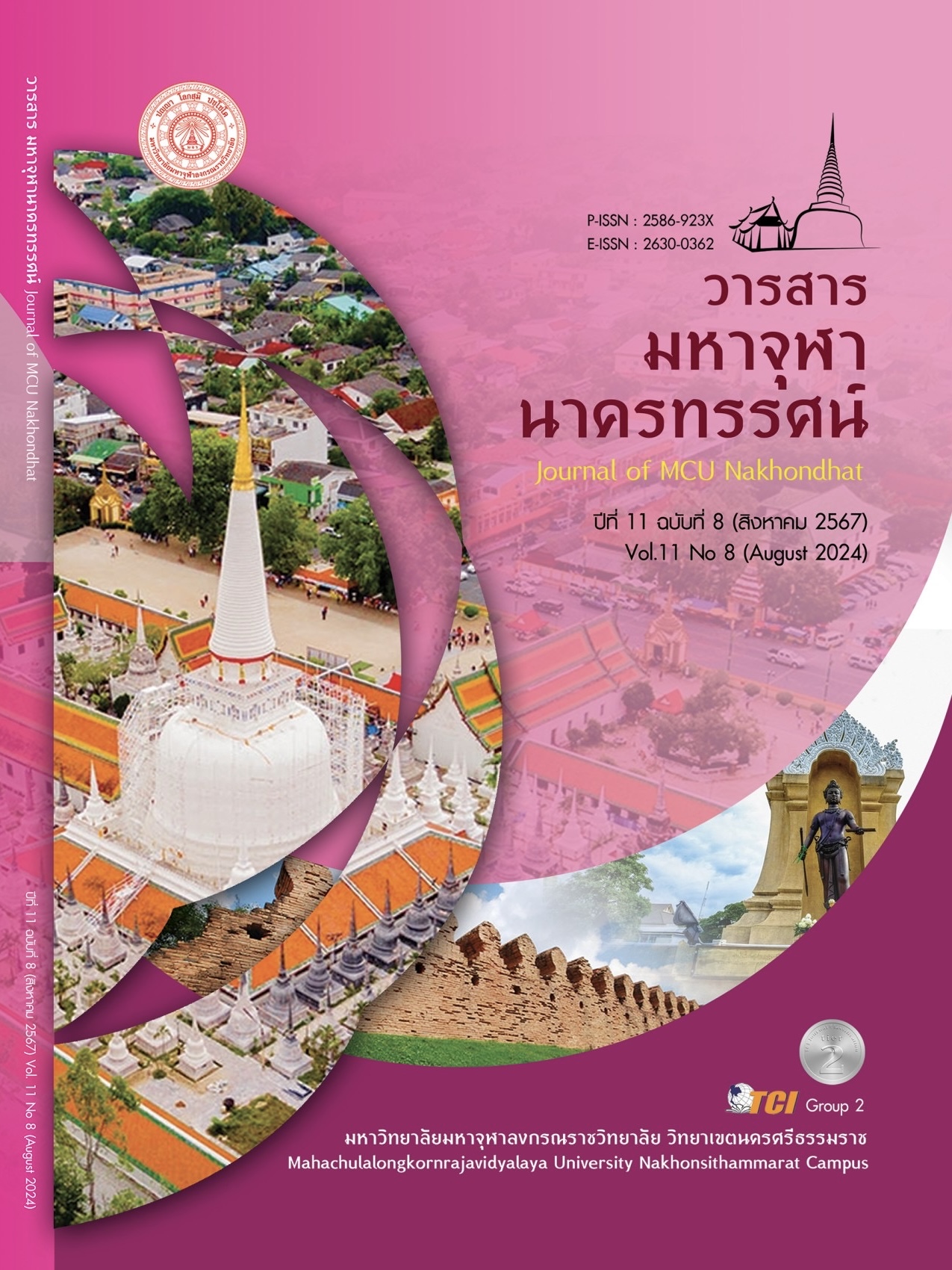COMMUNICATION FOR PUBLIC SERVICES BY THUNGSONG MUNICIPALITY, NAKHON SI THAMMARAT PROVINCE
Main Article Content
Abstract
The objectives of this research were as follows: 1) To study the concepts and 2) To study principles that shaped Thungsong Municipality’s communications with members of the public who came to receive services, and the methods used for communication in the provision of public services. Data were collected using the qualitative research method of in-depth interviews with 30 people directly involved with the subject matter by purposive selection. The results showed that 1) The major guiding principle was that all municipality personnel should provide quality service, always being personable, generous and attentive. The concept was to clearly state the steps involved in every process, and to make those steps proceed quickly, smoothly and correctly so any citizen coming to receive services would be satisfied. Every year the municipality personnel should jointly review all the services to make improvements and develop better capabilities. Communications technology should be used to support citizen services online. 2) Another guiding principle was that the work process should be managed to deliver high quality by reducing the time required for each service, reducing the number of steps involved, and making sure every individual receives the same standard of service. Personnel should use high quality communications to make sure that citizens are impressed every time they receive official services at the municipality or online through the website, social media or on the phone. Personnel should listen to every problem and try to understand it, should be completely willing to provide services and to communicate with the public, and should hasten to find an answer to every question. The municipality has a policy of promoting professionalism and stimulating excellence by recognizing outstanding personnel with awards for good work performance. The public services offered by the municipality include civil registry, tax collection, various kinds of permits, public health services, receiving grievances, waste removal, and welfare for disadvantaged groups.
Article Details

This work is licensed under a Creative Commons Attribution-NonCommercial-NoDerivatives 4.0 International License.
References
ทรงชัย วงษ์วัชรดำรง. (3 พ.ค. 2567). กลยุทธ์การออกแบบการพูดในที่ชุมชนเพื่อการโน้มน้าวใจในงาน การบริหาร. (วิทยาธร ท่อแก้ว, ผู้สัมภาษณ์)
Chapman, B. (2024). The profession of government: The public service in Europe. Milton Park United Kingdom: Taylor & Francis.
Cluley, V. et al. (2021). New development: Expanding public service value to include dis/value. Public Money & Management, 41(8), 656-659.
Engen, M. et al. (2021). Continuing the development of the public service logic: a study ofvalueco-destruction in public services. Public Management Review, 23(6), 886-905.
Hameduddin, T. & Engbers, T. (2022). Leadership and public service motivation: A systematic synthesis. International Public Management Journal, 25(1), 86-119.
Kulal, A. et al. (2024). Enhancing Public Service Delivery Efficiency: Exploring the Impact of AI. Journal of Open Innovation: Technology, Market, and Complexity, 10(3), 100329-100338.
Latupeirissa, J. J. P. et al. (2024). Transforming public service delivery: A comprehensive review of digitization initiatives. Sustainability, 16(7), 2818 https://doi.org/10.3390/su16072818
Ojasalo, J. & Kauppinen, S. (2024). Public value in public service ecosystems. Journal of Nonprofit & Public Sector Marketing, 36(2), 179-207.
Pratama, A. B. (2020). The landscape of public service innovation in Indonesia: A comprehen sive analysis of its characteristic and trend. Innovation & Management Review, 17(1), 25-40.
Trischler, J. & Westman, J. (2022). Design for experience-a public service design approach in the age of digitalization. Public Management Review, 24(8), 1251-1270.
Vandenabeele, W. et al. (2014). Past, present, and future of public service motivation research. Public Administration, 92(4), 779-789.
Witesman, E. M. et al. (2024). Creating a public service topology: Mapping public service motivation, public service ethos, and public service values. Public Administration, 102(2), 540-579.


